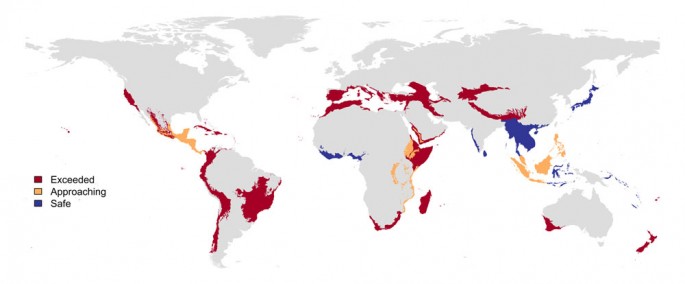Scientists reveal how farmlands are now damaging nature and pushing it from a "safe limit" of 58 percent of land surface, that are now threatening natural services such as crop pollination by insects.
Regions that are heavily affected by these grasslands are found in the United States, Argentina, South Africa and Central Asia, as most of their natural systems are ravaged by declining animal and plant populations due to increasing human activities. The least affected regions are pine forests in the northern hemisphere and tundras.
In this new study, plant and animal diversity that are located on this 58 percent of the entire planet's land area are also occupied by 71 percent of human communities, which are now plummeting below safe levels which are also largely driven by expanding farmlands and roadworks including infrastructures by bigger cities.
The safe regions defined by scientists are where local and native species are still in abundance, with at least 90 percent levels that are untouched by farmlands and human activity. This data is based on 2.38 million records of 39,123 plant and animal species obtained from 18,659 sites around the globe.
In effect, increasing farmlands are now causing a massive decline of natural services from animals like pollination of food crops by insects, nutrient production in soils and even how forests can absorb excess carbon dioxide, acting as a natural carbon sink, and further preventing the effects of climate change.
According to lead author of the study, Tim Newbold from the University College London, when humans keep continuing degrading biodiversity, there will be an inevitable time where it can be very hard to support agriculture.
However, the study also notes an uncertainty for that 90 percent threshold for further damage since other scientists believe that nature can recover from massive declines. Newbold says that natural systems are more resilient to these shocks such as flooding and droughts, disease or even global warming, but it is best to take early precautions.
According to co-author of the study, Andy Purvis from the Natural History Museum, London, an ecological recession can result in worse repercussions as opposed to economic recessions, which only means that biodiversity should be brought back up again, as human development is causing these major biodiversity declines.
This new study is published in the journal Science.



























